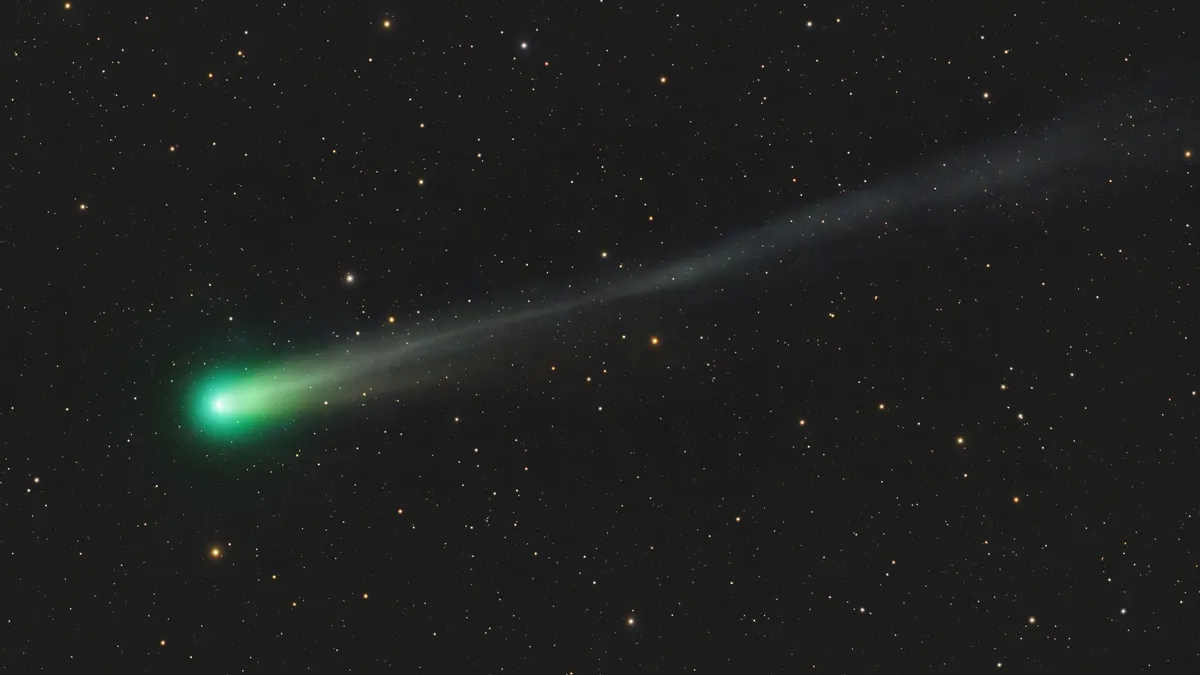
The past month has witnessed a significant brightening of Comet C/2025 A6 (Lemmon) as it approaches the sun, stirring excitement among astronomy enthusiasts. This comet is expected to shine brightly enough to be visible to the naked eye in mid to late October, making it a thrilling event for both amateur and seasoned stargazers. As comets near perihelion—their closest point to the sun—they typically become more active and luminous, and Comet Lemmon follows this pattern perfectly.
The warmth and energy from the sun play a crucial role in the comet's transformation. As Comet Lemmon gets closer to the sun, the heat vaporizes its icy materials, creating a gaseous central coma and a tail that drags along dusty particles. This interaction with sunlight produces stunning visual phenomena—spectacles that can be observed through telescopes or even with the naked eye under the right conditions.
As we anticipate the close approach of Comet Lemmon to Earth on October 21, this article will guide you on where and when to look for this celestial object. Since its discovery in January, the comet has brightened from a magnitude of +21.5 to approximately +5.7, according to the Comet Observation Database (COBS) managed by the Crni Vrh Observatory in Slovenia. This increase in brightness technically places it above the +6 detection limit of the human eye under ideal dark sky conditions. However, the light from the waning gibbous moon may hinder visibility in the upcoming week.
If Comet Lemmon continues its current trend of brightening, it could become a captivating naked-eye target in the coming weeks. Its visibility will improve, especially when viewed through binoculars or a backyard telescope. Notably, mid-October will see the comet passing close to the star Alkaphrah, also known as Chi Ursae Majoris, located in the constellation Ursa Major, just beneath the 'dipper' portion of the Big Dipper asterism. Following this, the comet will make its way toward Cor Caroli in the constellation Canes Venatici.
During its closest approach to Earth on October 21, Comet Lemmon will be situated in the heart of the constellation Boötes, the Herdsman. After this, it will continue its journey, passing beneath the head of the great serpent represented in the constellation Serpens around October 26 to 27.
The optimal time to observe Comet Lemmon will vary throughout the month. Early October will see the comet positioned high above the northeastern horizon during the pre-dawn hours. However, by October 21, as it approaches Earth, it will be visible low on the northwestern horizon in the evening sky.
If you're eager to capture stunning images of Comet Lemmon, be sure to check out our comprehensive guide on how to image a comet. This guide includes recommendations for the best cameras and lenses suited for astrophotography in 2025. Additionally, amateur astronomers can explore our curated lists of the best telescopes and binoculars for observing the night sky.
Don't miss this opportunity to witness a spectacular celestial event as Comet C/2025 A6 (Lemmon) draws near. Make your plans to observe this remarkable comet before, during, and after its flyby of Earth!